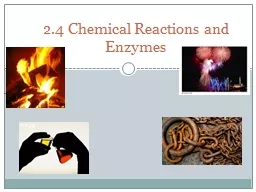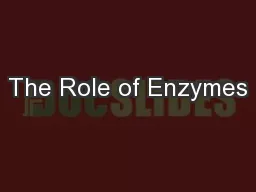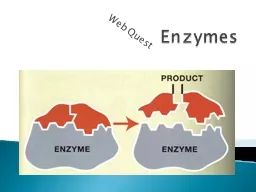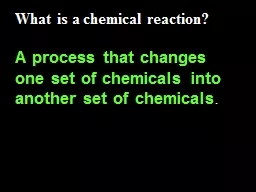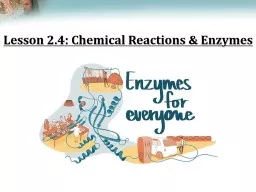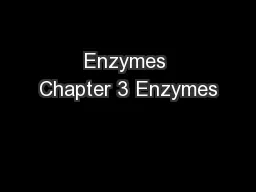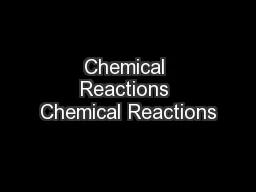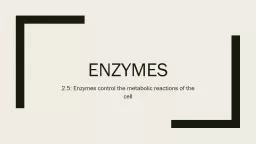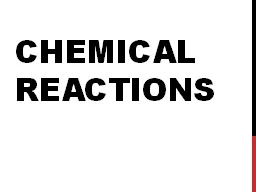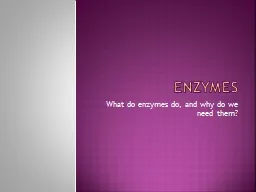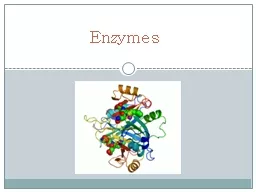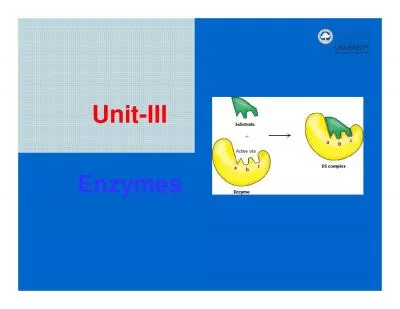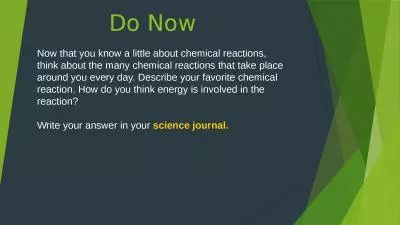PPT-2.4 Chemical Reactions and Enzymes
Author : karlyn-bohler | Published Date : 2019-01-23
Chemical Reactions A chemical reaction is a process that changes or transforms one set of chemicals into another by changing the chemical bonds that join atoms
Presentation Embed Code
Download Presentation
Download Presentation The PPT/PDF document "2.4 Chemical Reactions and Enzymes" is the property of its rightful owner. Permission is granted to download and print the materials on this website for personal, non-commercial use only, and to display it on your personal computer provided you do not modify the materials and that you retain all copyright notices contained in the materials. By downloading content from our website, you accept the terms of this agreement.
2.4 Chemical Reactions and Enzymes: Transcript
Chemical Reactions A chemical reaction is a process that changes or transforms one set of chemicals into another by changing the chemical bonds that join atoms in compounds Mass and energy are conserved during chemical transformations. Chapter 2: Section 2.5. 1. Objectives. SWBAT explain the effect of a catalyst on activation energy. . SWBAT describe how enzymes regulate chemical reactions. . and maintain homeostasis.. 2. Starter: How can this be possible. Enzymes speed up chemical reactions.. Everything that happens in a cell. Growth. Reproduction. Interaction with the environment. Response to stimuli. Is the result of a chemical reaction.. A chemical reaction is a change in the arrangement. 1. What are enzymes?. Each enzyme has only one specific reaction it can perform. . 2. How many different reactions can a single enzyme perform?. Yes, the same enzyme molecule can be used over and over. protein. !. Enzymes are . Biological . catalysts . that . increase. . the rate of metabolic reactions.. Since enzymes speed up chemical reaction rates, what are they called?. Catalyst- . A substance . Chemical Reactions. :. A . chemical reaction . is a process that changes one set of chemicals into another by rearranging chemical bonds. The elements you start with are . reactants. The elements you end with are . Part 1. . Chapter 3. Learning outcomes. You should be able to:. explain how enzymes work. describe and explain the factors that affect. enzyme activity. use V. max. and K. m. to compare the affinity of different enzymes for their substrates. 10.1 . Reactions and . Equations. Evidence of Chemical Reactions. .. . The process of which the atoms of one or more substances are rearranged to form different substances is called a . Chemical Reaction. Enzyme & Substrate. An enzyme is a globular protein which acts as a biological catalyst by speeding up the rate of chemical reactions. . Enzymes are . NOT. changed or consumed by the reactions they catalyze and thus can be reused. . Changes or transforms chemicals into . other. chemicals. Ex: Iron + Oxygen . . Iron Oxide (rust). Physical Science Review. What is the product?. What are the reactants?. Chemical formula. . shows the kind and proportion of atoms of each element that occurs in a particular compound. Enzymes. Back when we discussed proteins, we learned that one critical function of protein was to speed up chemical reactions.. Enzymes. are the proteins that increase the rate of chemical reactions. In order for chemical reactions to take place, . enzymes . must be present to help . speed up . the reaction.. Chemical bonds connect atoms. to make . molecules. .. Chemical . reactions. can do two things:. 83 Lesson 3: Enzyme Regulation of Biochemical Reactions What is a biological catalyst? This super - fast train can obviously reach great speeds. And there's a lot of technology that helps this train Regulation of enzymes Introduction andProperties of Enzymes Enzymes are characteristics to facilitate the Enzyme-catalyzed reactions take place Reactants need to pass over the energy barrier, Catalys Write your answer in your. . science journal.. Quiz. 1. How . many molecules of oxygen gas in the reactant (O. 2. ) are needed to balance this equation?. CH. 4. + O. 2. → 2CO. 2. + 4H. 2. O.
Download Document
Here is the link to download the presentation.
"2.4 Chemical Reactions and Enzymes"The content belongs to its owner. You may download and print it for personal use, without modification, and keep all copyright notices. By downloading, you agree to these terms.
Related Documents

